Given the general trend of today’s games emphasizing style and image over substance, it’s not exactly surprising that a lot of “old” gamers have found themselves going back to some of the gems of yesteryear. Some have even just plain forgotten that there was once a time when games had powerful stories, imagery and emotional depth that set them apart from flashier fare. Unfortunately, as graphics processors increased in complexity and character models became more intricate, games started moving away from their old standards and embracing newer fare.
Take a journey back to the dawn of the 21st century, to the end of the road for the Sony PlayStation, and there you will a find a game that might have been one of the last to truly mix a compelling story, relate-able and interesting characters, and just enough image to make it a true representation for what gaming could accomplish. Now, a full decade after its release, the game can still stand up against the best of what the modern generation has to offer, with excellent replay value and a lighthearted experience.
And did I mention, it was released by Square?
Final Fantasy IX could have been the biggest thing ever to grace the Playstation, and was certainly anticipated. Coming off the best selling Final Fantasy VIII (still one of the most played titles in the series), and following several of the best-selling games in RPG history, Final Fantasy IX had the pedigree and talent behind it to craft an instant classic. It reunited the original developers, and was part of a massive "compendium" of games that would also yield Final Fantasy X and the online XI, ushering in a new generation of games for new technologies. Yet, when you ask the general gaming public about the game, most are unaware of it, or have simply not bothered to play it. Those that have, speak highly of what they took away from it, but it never had the impact or reach of its predecessors. However, it touched many of those who played it, and many of those players count it as the most repeatable of all the Final Fantasy games.
When it was released, Final Fantasy IX was heralded as “a return to the fantasy that made the series so popular.” Whereas some of the more recent entries had gone further and further down the road of science fiction, with big weapons, space travel, and heavy scientific themes, Final Fantasy IX was a fantasy game in the truest sense of the word. At a time before steampunk became the defined experience it is, Final Fantasy IX was using it to tell a compelling story set in a colorful, deep world populated my the types of interesting races and nations that had once graced all their games. Steam (well, Mist) powered airships flew in the skies, rolling hills and vast oceans graced the world below, blades and magic replaced guns and rockets, and music was quaint and fitting. Exploration was a huge part of the game, and a very real sense of awe seemed to permeate the places even the Mist could not.
One of the biggest complaints about the previous game (or two, depending on how you viewed Final Fantasy VII) was its heavy reliance on graphics and Full Motion Video over story, which was one of the leading aspects that set the Final Fantasy series apart from others. Indeed, much of Final Fantasy VIII centered around crafting some of the best video sequences of any game at the time, and truly made the graphics stand out. Unfortunately, at the same time, all those fancy pictures lacked a solid story to connect them. There was little to no character development, the main actors were all stereotypical (especially the “emo protagonist” Squall Leonheart, who seemed to lack all emotion whatsoever), and the exact identity of the villain was murky most of the way through. Despite being built as a game centered around “an epic story of love,” most of the time the game suffered from horrible cliches, idealized characters and stark contrasts between good and bad.
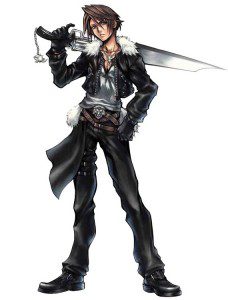 |
| Don’t let the sword fool you, he only uses it to “remind himself how to feel,” and chop the occasional hot dog. |
Final Fantasy IX was an almost complete reversal of this trend. Not to say that the graphics were sub-par. Quite the contrary, the graphics were amazing. But this go around, each character was given time in the spotlight, their motivations were complex and individually motivated, and each one seemed to have a solidly scripted personality, dialogue, ‘voice’ and actions. The world the characters lived in was equally as varied, as different nations existed on multiple continents, sometimes tenuously side by side, and they each had their own traditions, taboos and histories. There was still the general idea of conquest floating around, but this time international relations and politics actually appeared. Each nation had political ambitions and relations between powers were tense more often than not. There was a distinct perception of the world, and those who inhabited it. And when it came to exploring the frontiers, there was a definite dichotomy between what was clearly urban, and what was not.
Adding to the flavor of the game were the insertions of random cutscenes called “RTE” or “Real Time Events,” which often showed what other members of the party were doing at that point. Since much of the first half of the game was split into two parties traveling along two separate geographical and story-based routes at the same time, it was interesting to see able to see what the others were doing, and emphasized that these were important characters, and not just “meat shields”. There were also plenty of “hidden” RTE events that had to be unlocked, uncovered, or were themselves Easter Eggs dropping references to previous games in the series (as with the early-on insertion of the ship’s band playing the Shinra March from Final Fantasy VII to help “liven the mood”).
The world was truly large, and truly magnificent. I remember saying once to a friend that Final Fantasy IX gave us back our World Map, and it did. Not since Final Fantasy VI was a world map so fully developed, and not since VI was it so necessary to traverse it. Random encounters were welcomed, as enemies changed from zone to zone. Rivers, mountains and fields were all unique (there’s that word again), and varied from region to region. There were dedicated grinding zones, powerful rare monsters, and even noncombat encounters like the “Ragtime Man”, who quizzed you for gold, and the “cute monsters,” who asked for ore/gold/whatever in exchange for massive experience. Leveling was a joy no longer reserved for dungeon or town zones, and it was appreciated, and undertaken greatly.
Part of the appeal of leveling lay with the dynamic of “Crystal Skills,” which were specific abilities assigned to your character that could be activated by inserting “crystals” into the skill slots. Each one offered a different bonus: Jelly, for example, prevented “Stone” status, “Clear-Headed” prevented Berserk and “LoudMouth” warded Silence, but there were also skills like “Auto-Regen” which kept health up. While some of the skills were restricted to armor at first, over time they could be learned by the characters and became part of a permanent inventory. And believe me, these skills were necessary in later levels. (One of the truly great “swindles” in the game itself came at the end boss, who could wipe the entire party with incredible ease, simply because the wrong skills were equipped going in. This was incredibly frustrating, and not obvious either, as I needed a guide just to handle him.) So, of course, the grind to obtain levels and gain new crystals became more and more important, especially when the action shifted, and the secondary party came onto the scene with sufficiently lower levels than the party you were just using.
Mechanics aside, I mentioned earlier how the story of the game set it apart from previous outings into the Final Fantasy world. Well, for the first time in a long time, we were introduced to not one, not two, but three main characters who guided us through the game. Zidane Tribal, the monkey-tailed rogue who we first see in the opening sequence plotting a kidnapping, was one of the truly great Final Fantasy protagonists, and not just because he wasn’t the silent type with a bad memory. No, like his ancestor Sun Wukong (the legendary Monkey King from which a great deal of his personality derives), Zidane was funny, mischievous (he grabs the Princess’ rear at one point early on with the remark “Ooh, soft!”), noble, loyal and humble. Yes, he also didn’t know too much about who he was, but he truly didn’t care (well, he sort of did, but there were more important things to do than dwell on the past). He wanted adventure, but he also didn’t forget his family and friends. And the one point in the game where he does succumb to an assault of self-doubt, he needs not only the support of his friends, but the power of his own will and drive to push forward and protect what he loves, to break the curse and continue on. A radical departure from previous “flawed” heroes who fought because they had nothing better to do, or because they were forced to “by the story.”
For her part, Princess Garnet til Alexandros (or Dagger, as we know her throughout the game…or as her REAL name, which requires an event to unlock), is yet another strong willed female lead, but this time she actually leads, instead of fawning over the male lead and following him everywhere (I'm looking at you Rinoa…I never realized how derivative she actually was until recently). Early on she’s in charge of her own life and has her own needs, and she’s not afraid to run off to get what she wants. Her own story, one of a false family, broken memories and a mother totally given over to the acquisition of power, drives more of the story than most female leads do in these games- she’s not a secondary character by any means. And when she falls in love with Zidane, you feel like she truly has, and indeed knows what love is, rather than some wayward girl. She is developed, intricate and willful, and not to a fault.
Then there’s the strange case of Vivi the Black Mage. He is the first character you get to control, he acts like a child, is innocent and curious, and his own search for who and what he is in many ways influences the journeys taken by both Dagger and Zidane throughout the game. He’s far more cautious than either of them, far wiser at times, and possesses a great power that he fears to use. He looks up to those he sees as stronger than him, and respects his friends greatly. Vivi’s quest leads him to confront one of the most primal of human fears- mortality- and, though he has some slip-ups along the way, he faces his fears and comes out the stronger.
But what would a game be without a little heavy material? In fact, a good deal of Squaresoft games were often defined, an remembered fondly, for their often more “heady” attributes. Would Final Fantasy VI have been so widely acclaimed if Kefka hadn’t been so insane? Hell, Sephiroth stole an entire concept from Jewish Mysticism and made it the defining quality of his character. And I think Chrono Trigger did more to warn again the dangers of time travel than H.G. Wells (or for that matter, Doctor Who) could have imagined. But after the glory days of the SNES had long ended, these kinds of heady themes seemed to die off. That is, until one of the developers of Final Fantasy IX decided to get philosophical and read some Nietzsche (or at least some Camus).The supporting cast of the game may not receive the same degree of treatment when it comes to story development, but they certainly are not ignored (something Final Fantasy VIII did frequently to anyone who wasn’t named Loire), and each gets at least one scene devoted to their backstory. The sole exceptions: the knight Steiner, who serves as Dagger’s guardian, and the bounty hunter Amarant. But in their cases, this is more than acceptable. Steiner doesn’t need any exposition as to why he serves Dagger, because it is plain from his actions that he both takes his duty seriously, and that service to the crown was a lifelong dream. And what he trades off in backstory, he makes up for in interactions with General Beatrix later on. As for Amarant…his is a story best left unanswered. It makes him more mysterious that way.
I point often, when I discuss the game, to a certain scene that I think makes Final Fantasy IX such a memorable game. After the parties have managed to reunite and escape from the main continent, already embroiled in war as it was, they find themselves lost int he middle of a forest, surrounded by a colony of the same Black Mage dolls they had been fighting all along. And little Vivi, as impressionable as ever, finds his way to the town’s makeshift cemetery. And this was where the game takes a turn down a road that both sets it apart from all the other games in the series, but also shapes the rest of the story, right up until the final battle.
See, the Black Mages were made as weapons. Given nearly limitless power and unleashed on the world by Square’s second best mentally-unstable megalomaniac “advisor” Kuja, they were never meant to be sentient. But of course, as Ian Malcolm put so well, “life finds a way” and they manage to come to their senses in time to run away from bloodshed and try to create simple lives for themselves. And then they start dying. They don’t really understand what death is, just that they “stop moving,” at which point they need to be “put in the ground.” Watching these killing machines try to contemplate the concept of death, often with about as much clarity and understanding as a five year old, puts the rest of the game into perspective. And it also gets you to start thinking. Death is one of those ideas that makes even grown adults tremble with some primal fear, and now we see it through the eyes of the truly uninitiated. It can be very haunting at times, and sobering at others, depending on the player’s views of the unknown.
As the rest of the game unfolds, mortality (and more precisely, the fear of it) begins to play a much larger role. We find out that Kuja himself is afraid to die, we see the Black Mages (and even Vivi) switch sides simply to gain a few more years of functionality. We see the characters confront death in their own lives, be it parents or friends, or even their own impending fate. Destruction on a wide scale is unleashed, in the name of survival or simply “if I can’t live, then nobody else can either.” They fight through the fortress of Pandemonium, surrounded by chaos itself. And dragons, one of the original monsters of human mythology, make an attempt to halt progress with a display of power (an numbers) in what is easily the most cinematically satisfying cutscene Final Fantasy has ever produced.
Still not deterred by their foes, the characters enter into the primordial memories of the planet itself in pursuit of the obsessed Kuja. They even find their way into the eternal hearth of life itself, the Crystal World from where all things came and return.There they find Kuja, consumed by his anger and fear, ready to destroy the crystal. They manage to defeat him, but not before he throws a temper tantrum and smites them all with his “Ultima” spell. And it winds its way down to a final battle against, all things, Death itself (embodied in the idea of the Necron, said boss who can wipe you if you’re unprepared). It is here we find what might be the best scene in the entire game: the four party members you are NOT using for the final battle give their own lives to revive the four members who are active, based entirely on who they have the strongest relationship to, in essence sacrificing themselves so their friends can push forward and save the universe. And after all is said and done, Zidane’s answer to the question of “All beings are born to die, so why do you fight the inevitable?”: “Because we can.” How very simple, hopeful, and not just a little bit existential- fighting against death because life, however fragile, is still life, and the memories and relationships we create while we live define who we are and how we are remembered. Cue the violins, break out the champagne and enjoy the last fifteen minutes of exposition. (Die hard gamers will also spend repeated views trying to find the Easter Egg for two previous Final Fantasy titles. Tip: pay close attention to the soliloquy during “I Want to be Your Canary.” )
Maybe I’m reading too much into the game, but that scene, the culmination of four discs of interactions and relationships between eight almost completely unrelated characters, hammered home something important: life goes on, best we can do is go with the flow and enjoy the ride. The message resonated so strongly (not to mention the compelling actions of those playing the story out) that it got me to play through the game far more times than any other RPG I own, and I still play it at least once a year to remind myself of how enjoyable the game actually was.
I wouldn’t go so far as to say that Final Fantasy IX was a game you slept on, or missed. It generated enough buzz to become a Greatest Hit, after all, and even today I bump into cosplayers at cons who appreciate the characters of Kuja, Zidane and Dagger. But it still sold fewer copies than any of the other Playstation Final Fantasy titles, and it’s resale value today lags far behind the juggernaut of Final Fantasy VII. Still, it gathered some of the highest ratings of any Final Fantasy, and left those who did play it generally pleased. Throwbacks to previous titles in the series, interesting characters, deep storylines, fun and memorable music and a simplified battle system (simplified, but not simple) helped the game become something truly enjoyable in the long run.
It’s not a hard game to find, even now. So if you haven’t played this one, do yourself a favor and do so. I still do.
Addendum:
For this week's edition of Throwback Thursday, I've decided to do a double down: This article is a long-form exploration of my love of Squaresoft's underrated "Final Fantasy IX," which was one of the first games I bought for the PlayStation, and remains one of my favorite games to this very day (right behind Persona 3, which I have been known to insist is pretty much the same game, meta-plot wise). In this respect, this article continues that trend of me defending and hyping an old classic for a new generation of gamers.
it's also a throwback to my old days as a writer on Real Otaku Gamer, which was the first site I ever contributed to outside of this one. This article was published there about four and a half years ago, late 2010, when I was feeling the need to be nostalgic. I've reprinted the text here with some stylistic edits, but it stands as a testament to the old writer in me, and the old gamer who loves his RPGs.

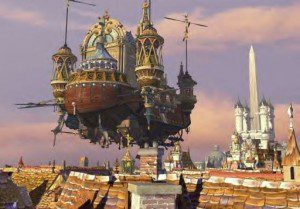

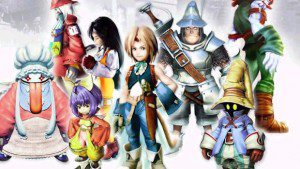

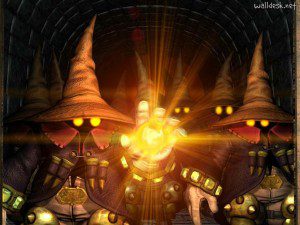

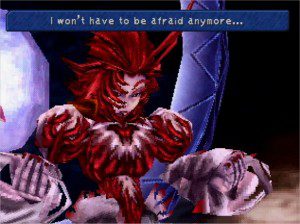
No comments:
Post a Comment